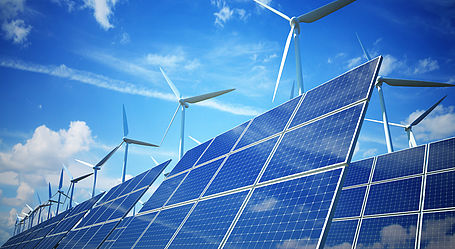 Desmond1234, CC BY-SA 4.0 <https://creativecommons.org/li
Desmond1234, CC BY-SA 4.0 <https://creativecommons.org/li
Opportunities For a Climate-First Policy in Latin America
The Biden Administration has signaled it will accelerate efforts to fight climate change in Latin America and has many willing partners in the region, including Argentina, Chile, Costa Rica, and Peru. However, Biden also faces some resistance to climate-friendly action in Latin America. Brazilian President Jair Bolsonaro has encouraged record deforestation in the Amazon, while Mexican President Andrés Manuel López Obrador recently pushed through reforms to Mexico’s electricity law that would impede renewable energy investments.
Despite potential resistance, the Biden Administration should prioritize Latin America in its climate-focused foreign policy agenda by promoting clean energy investment and climate resilience and adaptation. Ambitious U.S. climate policy would boost Latin America’s economy and address two critical national security priorities: strategic competition with China and climate-induced migration.
Recommendation 1: Renewable energy investment
The United States should help facilitate clean energy investment in Latin America to spur economic growth and compete with China.
Why?
Latin America is already transitioning to renewable energy
Latin America has a thriving renewable energy market and rising energy demand, and a quarter of Latin America’s primary energy already comes from renewable sources. In September 2019, a coalition of Latin American countries pledged to have 70% renewable energy by 2030. U.S. financing will help Latin America achieve this objective by accessing clean technologies like grid-scale battery storage.
Clean energy investment drives economic growth
The COVID-19 pandemic hit Latin America’s economies hard – they contracted by an estimated 6.9% in 2020 after a decade of sluggish growth. Investment in renewable energy will support Latin America’s recovery.
The International Renewable Energy Agency (IRENA) projects that a transformative energy transition will lead to a 2.5% increase in Latin America’s GDP by 2050 and add an estimated 5.2 million energy sector jobs to the region’s economy by 2050. This transformation would require investments of $118 billion per year in renewables, energy efficiency, electrification, and power grids.
Tackling climate change through investment in clean energy is also a smart long-term strategy for economic growth, since Latin America’s economies rely on agricultural exports vulnerable to the effects of climate change.
Strategic competition with China
Between 2000 and 2019, China financed $58 billion worth of projects in infrastructure, energy, and mining in Latin America, 15% of which was in renewable energy. Expanding renewable energy investment benefits China by creating new markets for its exports of solar panels, wind turbines, batteries, and electric vehicles.
Increasing U.S. investment in clean energy projects will expand the United States’ influence in the region and ensure that Latin American partners are not overly dependent on China – dependence China can leverage to garner support for its own foreign policy objectives. Lending to Latin America by the China Development Bank and the Export Import Bank of China has declined steadily since 2015 and reached zero in 2020. This decline provides an opening that the U.S. should fill.
What can the U.S. do?
- Promote private sector investment in Latin America’s renewable energy markets through public-private partnerships.
- Use diplomatic channels to encourage Latin American partners to create the regulatory frameworks and business opportunities to attract clean energy investment (including public auctions, clear communication about climate plans, and political stability friendly to foreign investment).
- Work through multilateral financial institutions, as well as the Export-Import Bank of the United States and the Development Finance Corporation, to increase lending for clean energy projects in Latin America.
Recommendation 2: Development aid to promote climate change mitigation and adaptation in Latin America
The U.S. should expand development aid programs focused on climate change mitigation and adaptation, particularly in Central America.
Why?
Climate change spurs migration, exacerbating instability.
The effects of climate change, including droughts, tropical storms, heavy rainfall, and high winds, could drive 3.9 million internal climate migrants within Mexico and Central America by 2050. Climate change also acts as a push factor for emigration from Central America to the United States by exacerbating food insecurity and worsening socioeconomic conditions including poverty, unemployment, urban displacement, and violence.
What can the U.S. do?
- Integrate climate change as central to the inter-agency U.S. Strategy for Central America, which informs funding priorities in the region. The current strategy focuses on security, governance, and economic development while neglecting climate change as a driver of migration.
- Renew and expand U.S. Agency for International Development’s (USAID) Central America Regional Climate Change Project.
- Increase USAID funding for climate adaptation and resilience programs, including: helping farmers adopt low-carbon and water-saving agriculture techniques, supporting local governments as they reduce emissions and incorporate internal climate migrants, and strengthening natural disaster response institutions.
As the United States’ neighbor, Latin America’s stability and economic prosperity is a national security concern. The Biden Administration should work with Latin American allies as it seeks to build the United States’ reputation as an international climate leader. Promoting investment in clean energy and climate adaptation would support economic growth, counteract China’s influence in Latin America, and address the root causes of migration.





